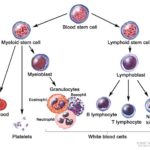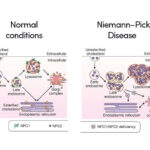Niacin deficiency, also known as vitamin B3 deficiency, is a nutritional disorder that can lead to pellagra, a severe condition characterized by dermatitis, diarrhea, and dementia. Niacin plays a critical role in cell metabolism, energy production, and DNA repair. Without sufficient niacin, vital physiological processes deteriorate, resulting in widespread systemic complications.

Understanding Niacin and Its Role in the Body
Niacin (vitamin B3) is a water-soluble vitamin that exists in two primary forms:
- Nicotinic acid – Primarily found in plant-based foods and supplements.
- Nicotinamide (niacinamide) – Present in animal-based foods and used in medical treatments.
Niacin is essential for forming nicotinamide adenine dinucleotide (NAD), a coenzyme involved in:
- Cellular energy production (ATP synthesis).
- DNA repair and cell signaling.
- Reducing oxidative stress and inflammation.
Causes
Niacin deficiency can result from poor dietary intake, malabsorption disorders, and increased metabolic demand.
1. Inadequate Dietary Intake
- Low-protein diets, especially those lacking tryptophan (a niacin precursor).
- Malnourishment or chronic poverty leading to insufficient vitamin intake.
- Alcoholism, which impairs niacin absorption and metabolism.
2. Medical Conditions That Lead to Niacin Deficiency
- Gastrointestinal disorders (e.g., Crohn’s disease, celiac disease) – Reduced absorption of niacin and tryptophan.
- Carcinoid syndrome – Increased tryptophan metabolism into serotonin rather than niacin.
- Hartnup disease – A rare genetic disorder that inhibits tryptophan absorption.
- Chronic diarrhea – Depletes niacin stores due to increased gastrointestinal losses.
3. Increased Niacin Demand or Loss
- Pregnancy and lactation – Increased metabolic demand for niacin.
- Dialysis patients – Loss of water-soluble vitamins, including niacin.
- Prolonged infections or chronic inflammatory diseases – Higher utilization of NAD, requiring more niacin intake.
Symptoms and Stages
Early Signs of Niacin Deficiency
- Fatigue and general weakness.
- Loss of appetite and weight loss.
- Digestive disturbances such as nausea and bloating.
Pellagra: The Severe Manifestation of Niacin Deficiency
If left untreated, niacin deficiency leads to pellagra, characterized by the “3 Ds”:
- Dermatitis – Red, scaly rash on sun-exposed areas.
- Diarrhea – Chronic gastrointestinal distress and malabsorption.
- Dementia – Cognitive decline, confusion, and irritability.
In advanced cases, pellagra progresses to the fourth “D” – death, if untreated.
Diagnosis of Niacin Deficiency
1. Clinical Evaluation
- Symptoms of pellagra and history of nutritional deficiency guide initial diagnosis.
- Sun-exposed skin rashes with symmetrical distribution are a hallmark feature.
2. Laboratory Tests
- Urinary N-methylnicotinamide test – Measures niacin excretion levels.
- Blood NAD/NADP levels – Confirms niacin depletion.
3. Differential Diagnosis
Conditions such as beriberi (vitamin B1 deficiency), kwashiorkor, and dermatitis due to autoimmune disorders should be ruled out.
Treatments
1. Niacin Supplementation
- Mild Deficiency: 50-100 mg niacin daily.
- Severe Pellagra: 300-500 mg/day of nicotinamide orally or intravenously.
2. Dietary Adjustments
Incorporating niacin-rich foods is essential for recovery and prevention.
Top Food Sources of Niacin:
- Animal-based sources: Chicken, turkey, fish (tuna, salmon), beef liver.
- Plant-based sources: Peanuts, mushrooms, whole grains, fortified cereals.
3. Addressing Underlying Conditions
- Alcohol cessation and improved nutritional intake.
- Treatment of malabsorption syndromes like Crohn’s disease.
- Correcting vitamin B6 deficiency, which aids in tryptophan-to-niacin conversion.
Prevention of Niacin Deficiency
- Balanced Diet: A nutrient-dense diet prevents deficiency.
- Fortified Foods: Many countries enrich flour and cereals with niacin.
- Regular Health Checkups: Screening for nutritional deficiencies in high-risk individuals.
Niacin deficiency is a serious yet preventable and treatable condition. Recognizing early symptoms and correcting dietary habits can prevent progression to pellagra. Proper supplementation and nutritional intervention play a vital role in ensuring optimal health and metabolic function.

